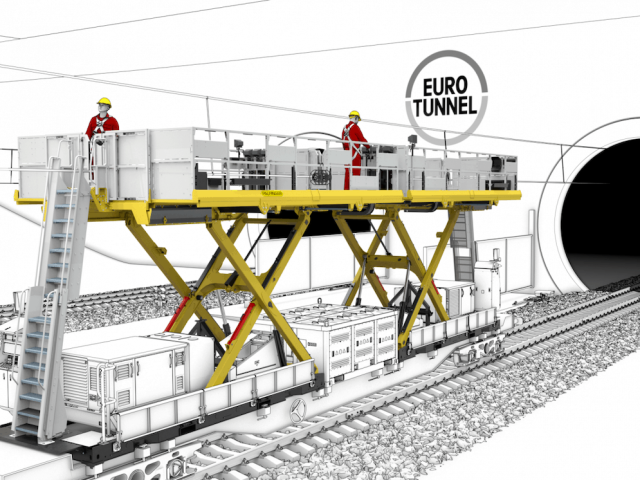Palfinger has further expanded their product portfolio in the heavy duty crane range with the introduction of the PK 135.002 TEC 7. The crane can be used for various applications, including performing heavy-duty operations, precision assembly work, operations requiring long reaches, container handling, lift system installation or roofing work.
[quads id=1]

Source: KHL
The crane comes with three different fly jibs – PJ 240, PJ 190 and PJ 150 – on three different extension booms can be fitted to extend the reach of the PK 135.002 TEC 7. The latter two are brand-new designs, just like PJ 240, which are technically based on the application of the new P-Profile.
The new model is 2 tonne lighter than PK 150002, but offers an 35% increase in lifting capacity when used with the fly jib.
Two choices are available when it comes to choosing the carrier vehicle for the PK 135.002 TEC 7. Either a 4-axle truck with a permissible total weight of 32 tonnes, leaving 2.5-3.0 tonnes of free payload, or a 5-axle truck with a total weight of 40 tonnes, leaving up to 8 tonnes of free payload.
Palfinger said that thanks to MEXT, TOOL, and WEIGH, the PK 135.002 TEC 7 features a range of additional innovative options. MEXT allows one or two mechanical extensions to be monitored by sensors and hence integrated into the overload protection system. TOOL allows various additional devices, which are connected via the multifunctional adapter (MFA), to be included in the calculation of the stability limit. WEIGH allows crane operators to weigh the load directly with the crane, thereby getting an overview of the positions which can be reached.
Operators can also choose from a wide range of options such as P-Fold, DOS-C and HPSC-Plus GEOM. With the P-Fold assistance system, crane operators can fold and unfold the crane quickly and easily using only finger movements. DPS-C increases the lifting power on the fly jib tremendously by including the centres of gravity of the load and deadweight in the Paltronic calculations. HPSC-Plus GEOM uses the same effect, resulting in a reach-dependent stability monitoring.
[irp]














